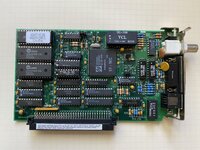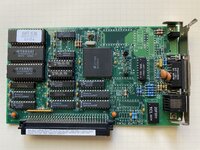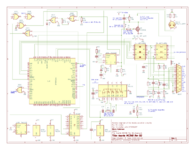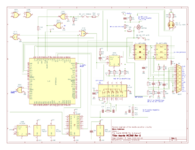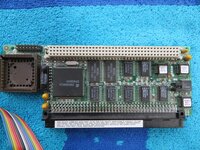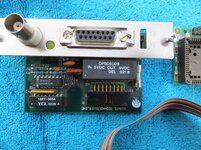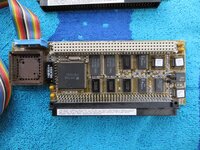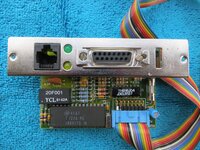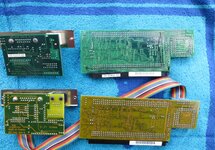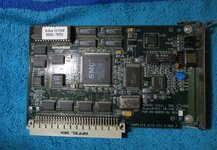I’ve used a couple of the Rev G version of these NICs in Mac IIcx and IIci, and I’ve always have trouble with RJ-45 10Base-T. Operating through an external AUI transceiver is fine but direct RJ-45 connection mostly fails.
People have reported these NICs don’t sync with modern 100/1000 switches. I connect via a 10/100 switch and still have problems. The only way that I can get a connection is to boot/reset with Link Integrity enabled (jumper JP-2 open) and then disable this immediately after boot. Then the line syncs - although the switch reports a half-duplex connection. Obviously, diddling this jumper like this is not practicable. I see the same with MacOS, NetBSD and Linux — i.e. it’s not a driver issue.
But .. I also have a Rev B1 board which has only AUI and RJ-45. This is flawless using RJ-45 over regular cabling and the same networking switches etc. This card is a similar to Rev G and it uses the same NatSemi DP83902 network controller chip. What?
Does anyone know what’s going on with this NIC? Is there any way to fix/modify/bodge the Rev G board to work like its Rev B1 sibling?
People have reported these NICs don’t sync with modern 100/1000 switches. I connect via a 10/100 switch and still have problems. The only way that I can get a connection is to boot/reset with Link Integrity enabled (jumper JP-2 open) and then disable this immediately after boot. Then the line syncs - although the switch reports a half-duplex connection. Obviously, diddling this jumper like this is not practicable. I see the same with MacOS, NetBSD and Linux — i.e. it’s not a driver issue.
But .. I also have a Rev B1 board which has only AUI and RJ-45. This is flawless using RJ-45 over regular cabling and the same networking switches etc. This card is a similar to Rev G and it uses the same NatSemi DP83902 network controller chip. What?
Does anyone know what’s going on with this NIC? Is there any way to fix/modify/bodge the Rev G board to work like its Rev B1 sibling?
Attachments
Last edited:

